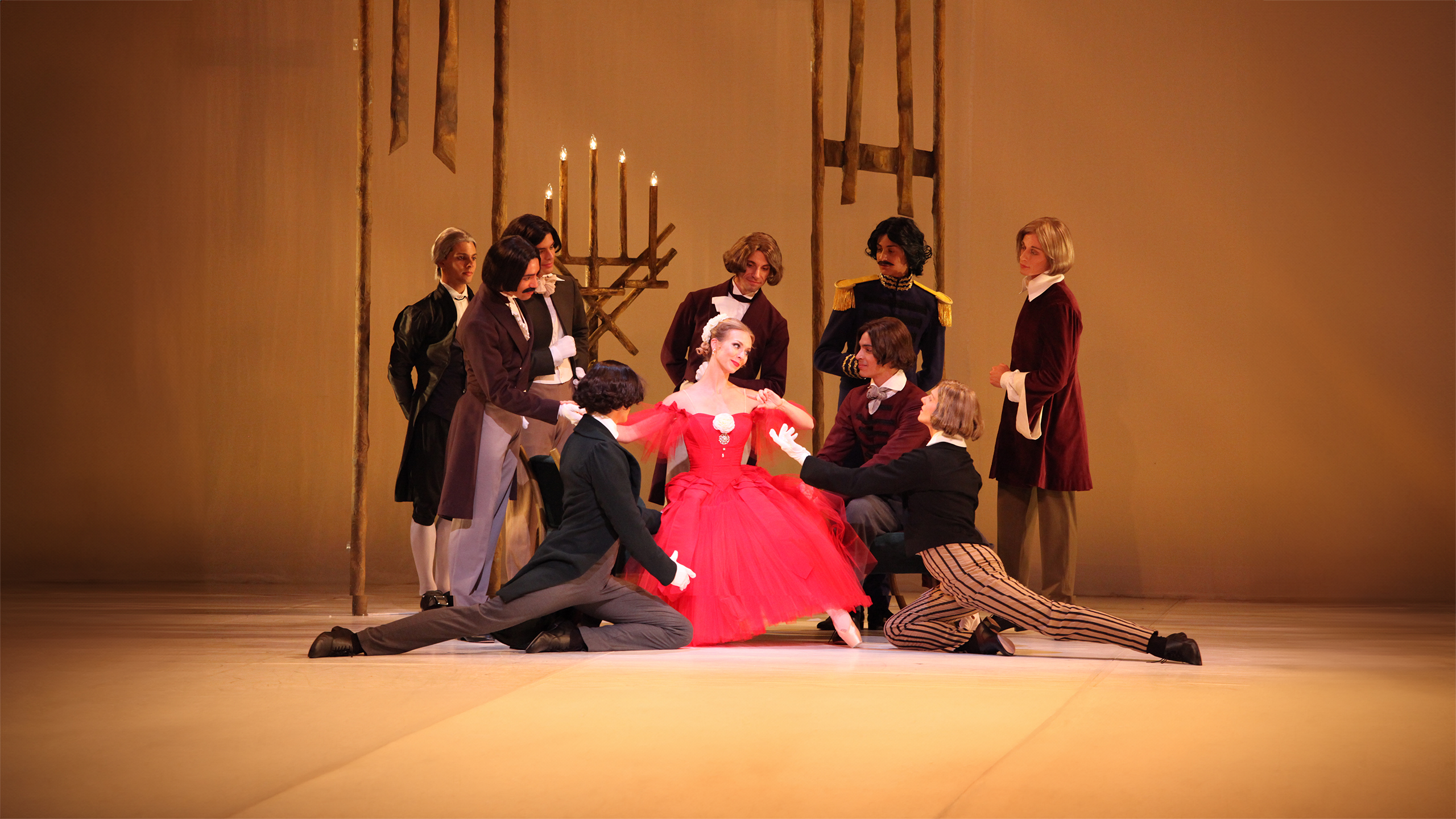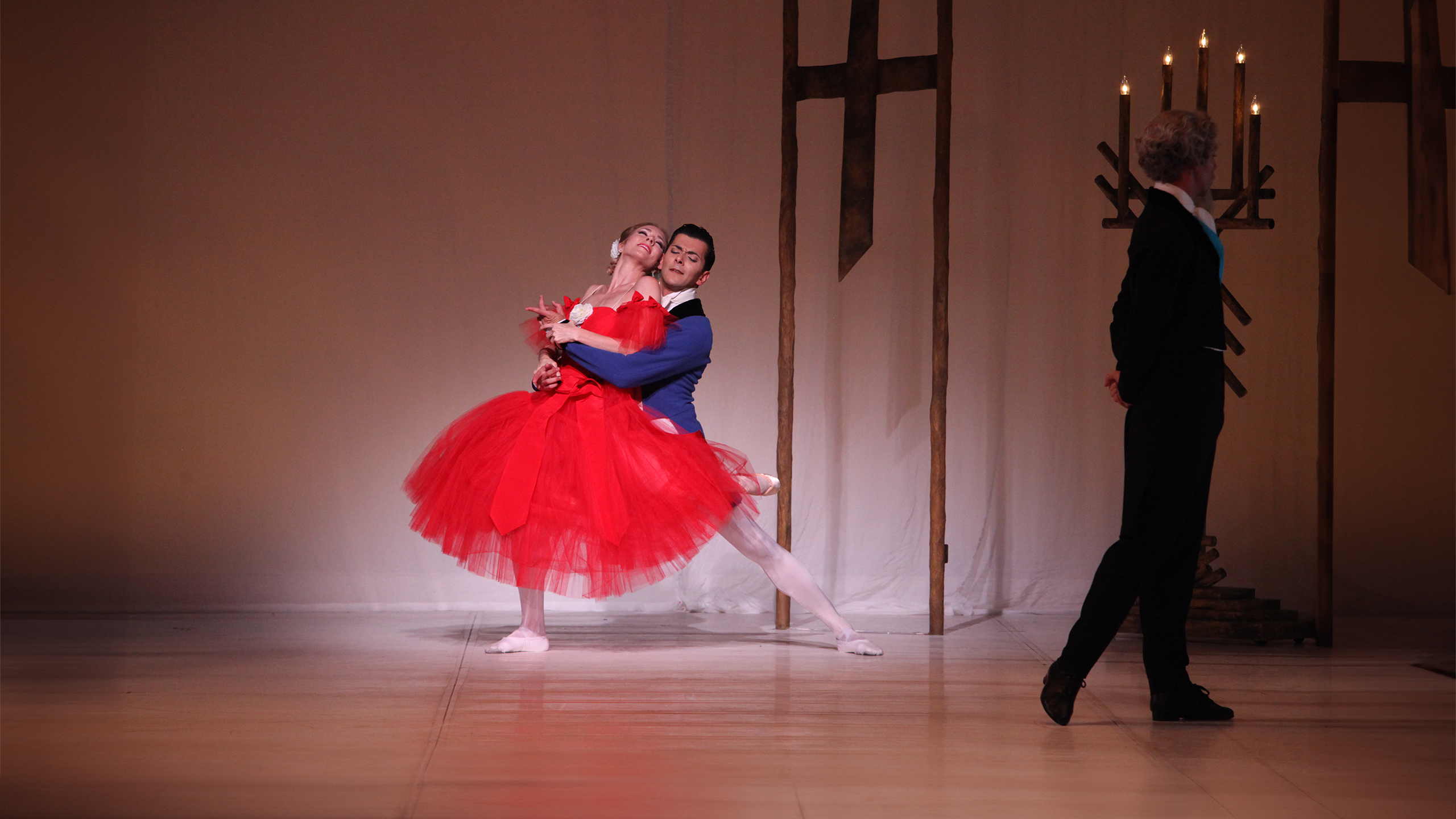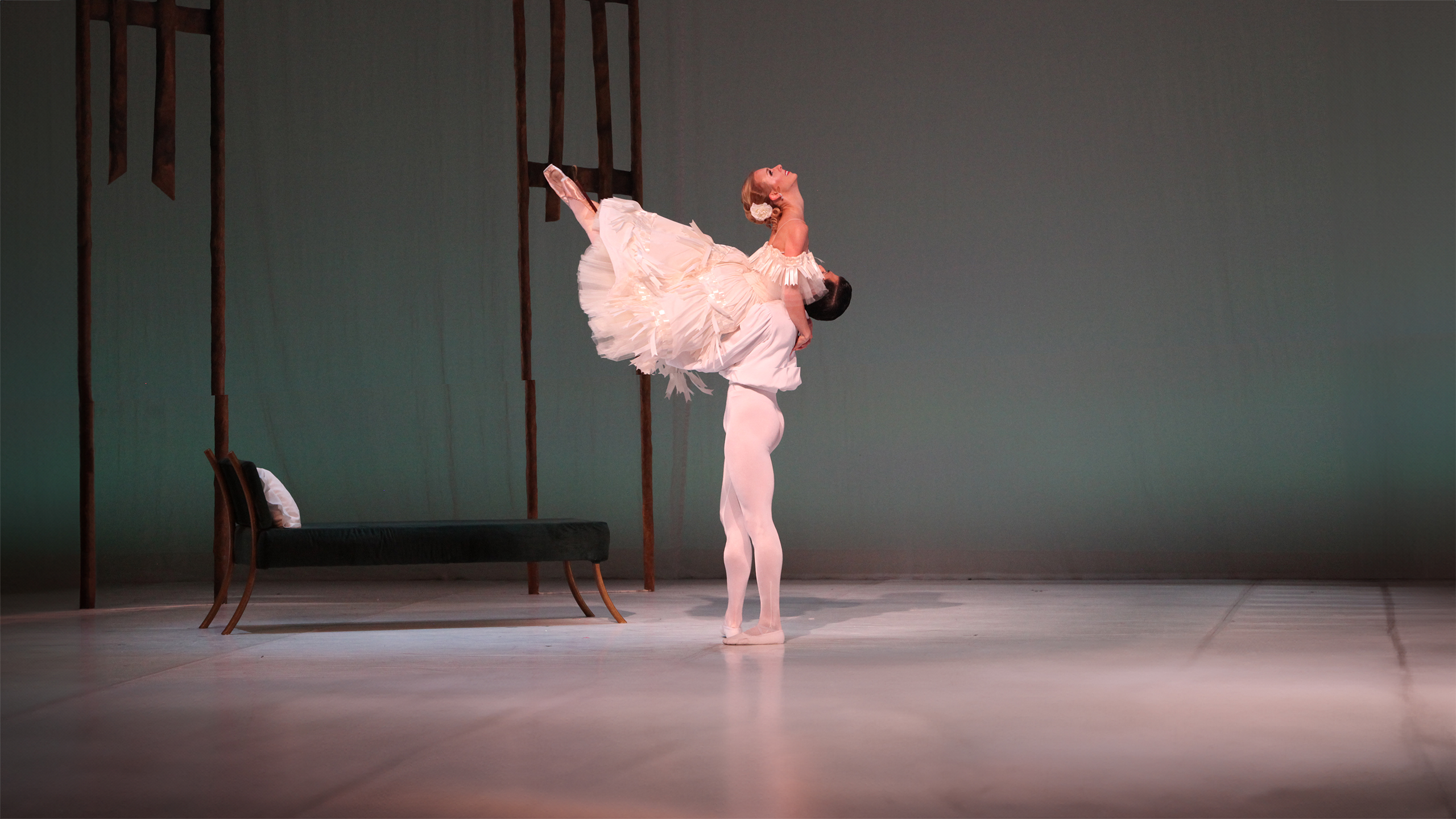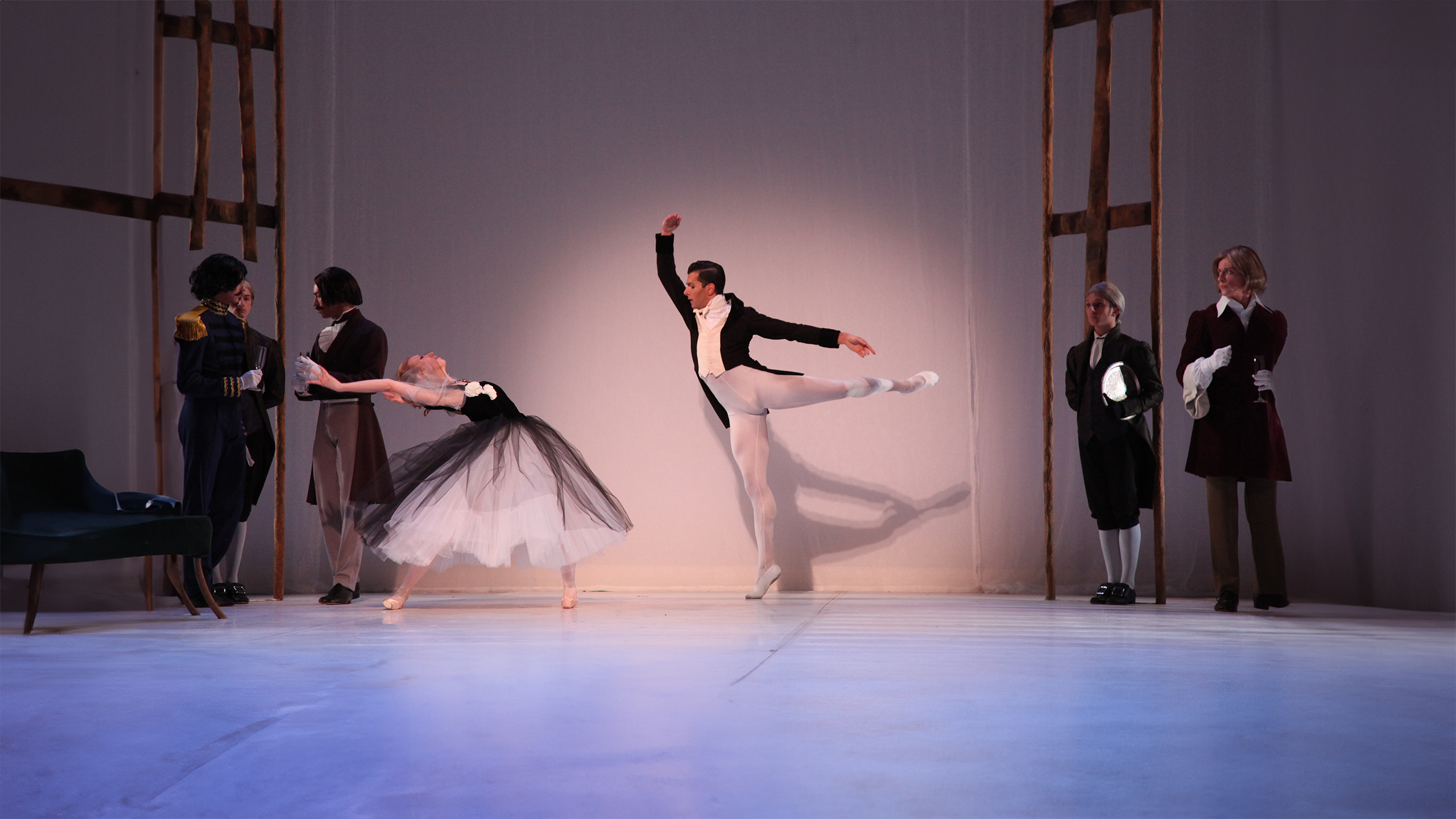Marguerite and Armand
Sir Frederick Ashton
Premiered March 12, 1963, by The Royal Ballet
Marguerite and Armand
A star vehicle created for the dazzling partnership of Margot Fonteyn and Rudolf Nureyev shortly after Nureyev’s arrival at The Royal Ballet, Marguerite and Armand was also a highlight of their farewell performances, and so hard was it to imagine anyone else in the title roles that for years afterwards, permission to stage the ballet was withheld. Happily, that has changed, and audiences can again appreciate Ashton’s interpretation of Dumas’ Romantic classic La Dame aux camélias, which also inspired Verdi’s La Traviata.
With Beaton’s elegant period costumes and Liszt’s piano sonata the perfect romantic score, Ashton movingly presents the essence of Dumas’ tragic tale of doomed love amidst the glamour of the 19th Century Parisian demi-monde. The intensity of the choreography was clear from the outset: Fonteyn recalled that rehearsals involved “a passion more real than life itself.”
In delirious flashbacks, as she lies dying of tuberculosis, Marguerite Gautier remembers her former days as a feted courtesan and the love of her life, Armand. We see the beautiful Marguerite, her heart untouched by her many amours, flirting with admirers, until she meets the young Armand and throws him a white camellia as she departs on the arm of her latest wealthy lover. Marguerite deserts her Paris life and rich protector for an idyllic love affair with Armand in the country, until his father persuades her to give up Armand for the sake of his family, which she does, without being free to explain her sacrifice. They dance a passionate farewell.
At a party in Paris, Armand angrily humiliates Marguerite, tearing from her the necklace presented by her protector, and contemptuously flinging money in her face before storming out. Alone, her friends, lovers and wealth all gone, Marguerite awaits death. Armand arrives, having learned from his father the reason she ended their affair, and the lovers are ecstatically reunited as she dies in his arms. In this tragic romance, Ashton created a unique ballet of passionate intensity, a fitting tribute to its original stars.



